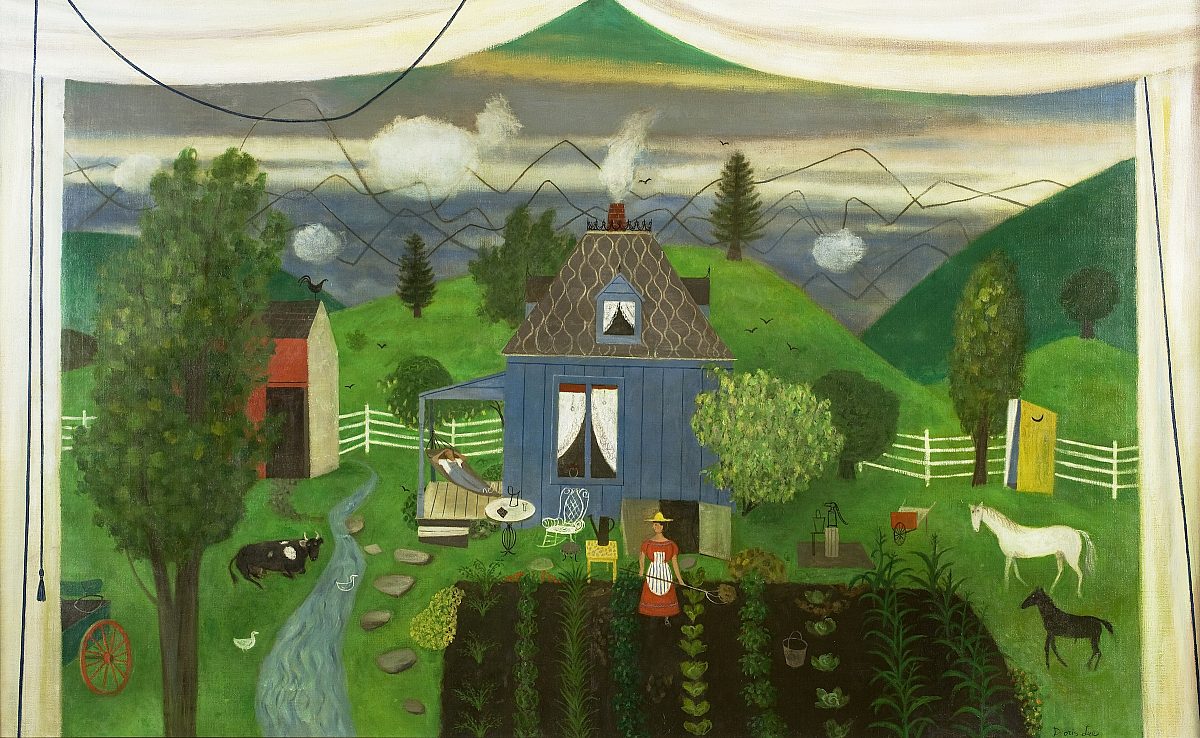
Main Galleries
Simple Pleasures: The Art of Doris Lee
Oct 30, 2022 - Jan 15, 2023
Presented by: Joe Orgill Family Fund for Exhibitions
Organized by: Westmoreland Museum of American Art
Simple Pleasures: The Art of Doris Lee presents an important opportunity for rediscovering one of the most popular figurative artists in American art history. From the 1930s through the 1950s, Doris Lee (1905-1983) painted some of the most recognizable images in American art.
Doris Lee was born and raised in Aledo, Illinois. After spending the late 1920s traveling throughout the United States, Canada, Europe, and South America, in 1931, she and her husband settled in Woodstock, New York, by that point one of America’s most vibrant art colonies. Throughout the 1930s and 1940s, she achieved a great deal of artistic success, exhibiting her work throughout the country and seeing her paintings acquired by significant public collections including the Art Institute of Chicago and the Metropolitan Museum of Art. She was esteemed in equally high terms for her commercial work, producing fabric and ceramic designs, prints, and award-winning illustrations for books and publications including Life and Fortune magazines. Lee also was the only woman to receive a commission for a major public mural project through the Works Progress Administration’s Federal Art Project.
Lee’s most beloved works align with American Scene painting, which is characterized by a focus on scenes of the everyday life and locales of ordinary working-class America. Even within this movement, Lee’s personal combination of folk art and emerging modernism (both styles prevalent in Woodstock) made her stand out in her own time. However, in an era of gender inequality, her work was frequently dismissed by critics because of its strong decorative style and accessible narratives, even though it remained popular with audiences and museum curators. Navigating the post-World War II artistic climate, Lee responded to the rise of Abstract Expressionism with skill, agility, and her own sense of grace, developing a signature visual style. Unlike her contemporaries who turned toward doubt and the tragic for authenticity, Lee turned toward joy to set her “out-of-joint” world aright by creating work that embraces play, wonder, and empathy.
Despite the widespread acclaim she received in her lifetime, Lee is less well-known today. Her commitment to figuration and narrative – a constant throughout her oeuvre – was overshadowed by the major abstract movements of the mid-twentieth century. By taking a modernist approach, Lee’s body of work merges the reduction of abstraction with the appeal of the everyday and offers a coherent visual identity that successfully bridged various artistic “camps” of twentieth-century American art, truly depicting scenes of the simple pleasures of everyday life.
Simple Pleasures gives overdue recognition of Lee’s significant contributions to American art and brings together paintings, drawings, prints, and ephemera spanning her impressive forty-year career from public and private collections across the country. In exploring her life and work, the exhibition pays respect to her ability to conjure joy in life’s simple pleasures and erases the idea that her art was too unserious to take seriously.
Simple Pleasures: The Art of Doris Lee is organized and toured by The Westmoreland Museum of American Art, Greensburg, PA. Co-Curated by Barbara L. Jones and Melissa Wolfe.
Sponsored by:
Opus East Memphis | First Horizon Foundation
Kate and Michael Buttarazzi | Karen and Preston Dorsett | Theodore W. and Betty J. Eckels Foundation | Andrea and Doug Edwards | Amanda and Nick Goetze | Susan and John Horseman | Anne and Mike Keeney | Nancy and Steve Morrow | Irene Orgill Gwen and Penn Owen | Chris and Dan Richards | Irene and Fred Smith Adele Wellford